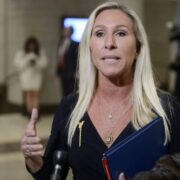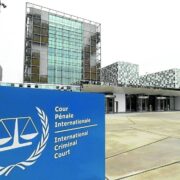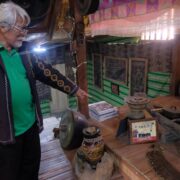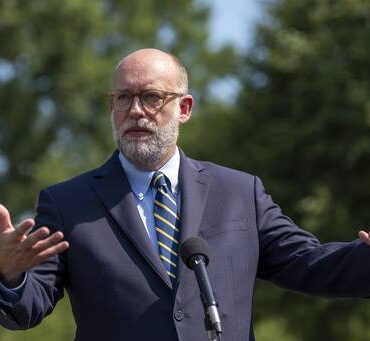After years of tough rules on liquids and footwear, US air travel may be on the cusp of a new era

NEW YORK—When limits on liquids were introduced at TSA checkpoints across the country in 2006, bins overflowed with bottled water, toothpaste, shaving cream and so much more. Nearly two decades later, travelers are much more accustomed to the “3-1-1” regulations” governing the size of the liquids they’re flying with, but scenes of passengers guzzling a beverage before putting their bags through the screening machines are still common.
That’s why Homeland Security Secretary Kristi Noem sent ripples through the traveling public when she said earlier this week that changes might be afoot when it comes to the TSA’s current liquid limits.
“The liquids, I’m questioning. So that may be the next big announcement, is what size your liquids need to be,” Noem told a conference in Washington.
Bigger bottles?
Will travelers be able to carry bigger bottles? Multiple 1-quart bags of liquids? Those details haven’t been rolled out. But coming on top of her announcement earlier this month that travelers could keep their shoes on at TSA checkpoints, it seems a much different security experience for American air travelers might be emerging.
Airline travel changed dramatically after the Sept. 11, 2001, attacks.
Before that, airlines were responsible for security and would often contract it out to private firms, said Henry Harteveldt, an airline industry analyst with Atmosphere Research Group.
Travelers often didn’t need to show their ID at security checkpoints—and people without boarding passes, such as family members or friends, could go to the gate in some locations.
“It was much more casual. And clearly it was ineffective, because 9/11 occurred,” Hartevelt said.
Birth of DHS
That’s when the Department of Homeland Security (DHS) and the Transportation Security Administration were born, with the mandate of preventing more terrorist attacks.
The liquid limits, however, didn’t kick in until 2006, after authorities foiled a plot that used liquid explosives smuggled aboard carry-on luggage. The TSA then very briefly banned all liquids in carry-on luggage. That ban lasted about six weeks, but strained airlines’ baggage systems as more and more travelers turned to checked bags to pack toiletries.
At the time the 3.4-ounce limit was implemented, the FBI and other laboratories had found that tiny amounts of substances small enough to fit into a quart-size bag couldn’t blow up an airliner.
When the ban was eventually lifted in September 2006, consumers and businesses alike had to learn how to adapt to the 3-1-1 rule—leading to more demand for smaller, travel size bottles of anything from shampoo to toothpaste, as well as clear, “TSA approved” toiletry bags that are still seen on store shelves today.
The rule was also adopted in many countries around the world.
Keith Jeffries, a former TSA director at Los Angeles International Airport, says whatever comes next needs to be clear for passengers.
Barrels of toothpaste
Jeffries was working for TSA in Albuquerque, New Mexico, when the liquids rules came down overnight. Signage had to be changed to let passengers know of the new regulations. Barrels overflowing with toothpaste, shaving cream and shampoo had to be emptied every half hour. “That’s how chaotic it was.”
Any move to simplify the screening process and cut down on the time it takes for passengers to navigate checkpoints would be a welcome change for everyone, Harteveldt says. Because it isn’t just about convenience; those lines before the security checkpoints are the most at risk to a potential threat.
‘Big step forward’
The fact that the TSA felt confident enough to change its shoe policy earlier this month may not save too much time from an individual traveler’s perspective, Harteveldt notes—but marks a “big step forward” toward cutting down the average length of the security process when you think about the number of people going through US airports each day. Relaxing current liquid restrictions could aid that effort.
Still, questions remain. “What we don’t know is what the secretary is going to announce about liquids,” Harteveldt said. “Will they remove the liquid ban altogether – and can we go back to bringing full-sized of toiletries and other items with us? And importantly, will they relax the limit on [the] quart-size bag itself?’”
Over the years, airports worldwide have adopted some aspects of security screenings faster or differently than others.
But travelers could be confused if they’re able to bring a full-size bottle of shampoo or lotion when flying out of one airport, for example, but not on their return trip home.
“The devil is going to be in the details,” Harteveldt said. “That’s why the rollout plan will be absolutely critical.”

















